Fort Lauderdale, FL Pollen and Allergy Report for Summer 2023
Pollen Allergy Trends in Fort Lauderdale, FL
When is pollen lowest in Fort Lauderdale, FL?

May
Lowest month total PPM
Avg. PPM
When is pollen highest in Fort Lauderdale, FL?

April
Highest month total PPM
Avg. PPM
How does pollen in Fort Lauderdale, FL compare to Florida?
Fort Lauderdale has a higher average PPM than the state of Florida.
Fort Lauderdale yearly avg PPM:
Florida yearly avg PPM:
How does pollen in Fort Lauderdale, FL compare to the USA?
Fort Lauderdale has a higher average PPM than the USA.
Fort Lauderdale yearly avg PPM:
USA yearly avg PPM:
Is pollen worse this year in Fort Lauderdale, FL?
Spring 2023 was better than spring 2022.
Spring 2023 PPM:
Spring 2022 PPM:
Average PPM in Fort Lauderdale, FL
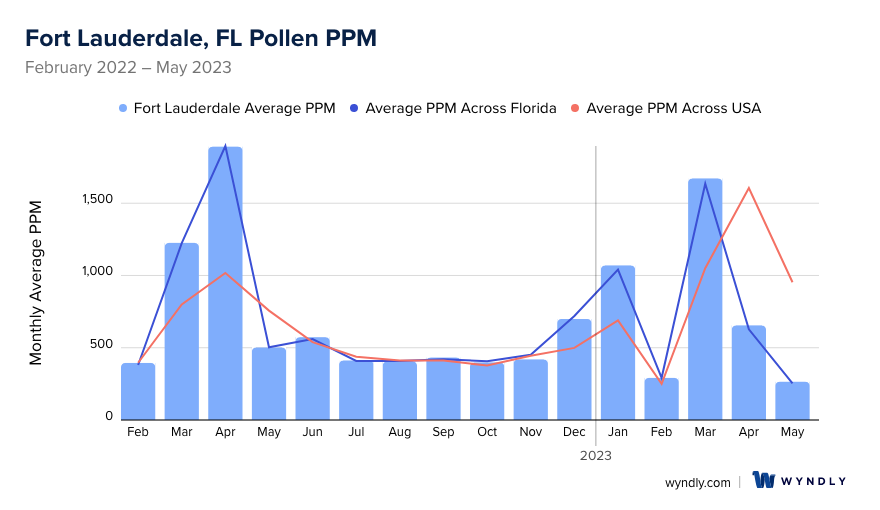
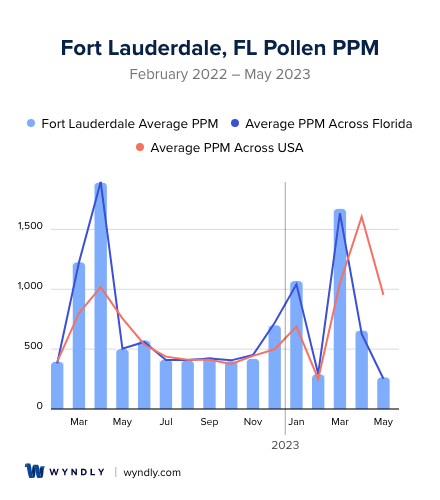
Fort Lauderdale, FL Pollen and Allergy Breakdown by Month
Grass
When is grass pollen highest in Fort Lauderdale, FL?
April has the highest grass pollen in Fort Lauderdale, FL with an average PPM of
When is grass pollen lowest in Fort Lauderdale, FL?
December has the lowest grass pollen in Fort Lauderdale, FL with an average PPM of
Tree
When is tree pollen highest in Fort Lauderdale, FL?
March has the highest tree pollen in Fort Lauderdale, FL with an average PPM of
When is tree pollen lowest in Fort Lauderdale, FL?
July has the lowest tree pollen in Fort Lauderdale, FL with an average PPM of
Weed
When is weed pollen highest in Fort Lauderdale, FL?
June has the highest weed pollen in Fort Lauderdale, FL with an average PPM of
When is weed pollen lowest in Fort Lauderdale, FL?
February has the lowest weed pollen in Fort Lauderdale, FL with an average PPM of
Fort Lauderdale, FL Pollen Monthly Breakdown by Pollen Type
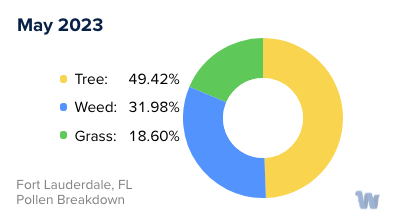
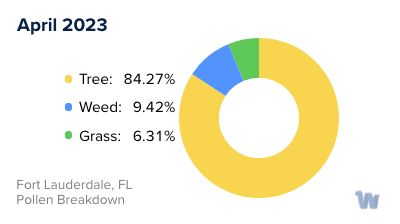
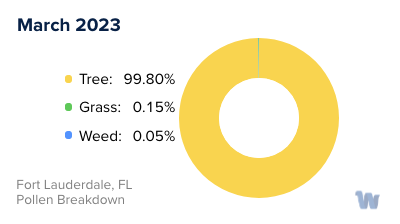
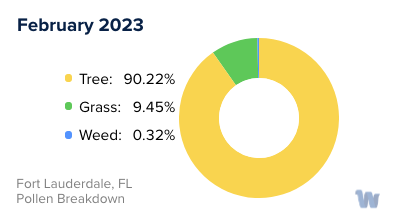
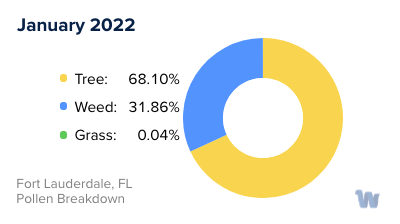
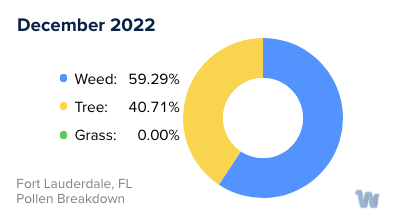
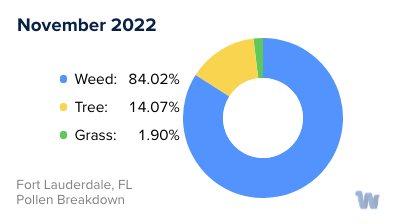
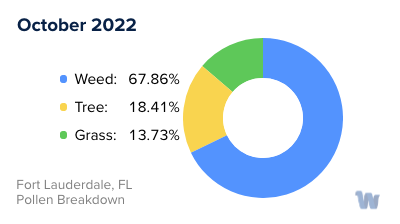
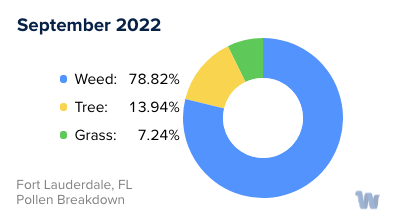
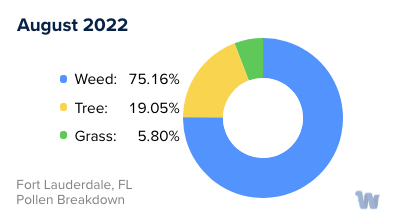
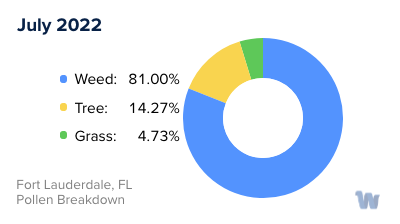
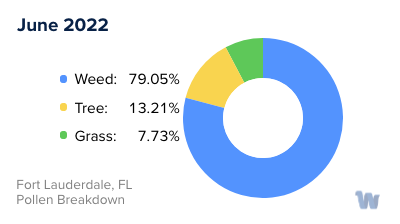
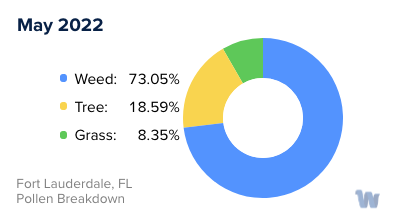
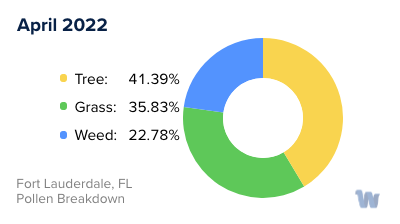
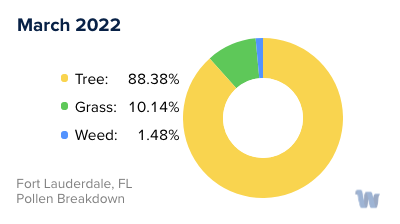
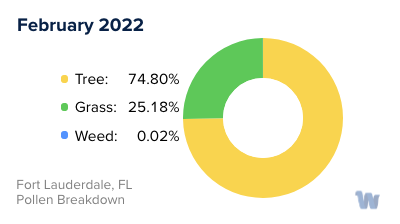
Pollen and Hay Fever in Fort Lauderdale, FL
Pollen allergies, commonly known as hay fever, significantly affect the lives of many individuals in Fort Lauderdale, Florida. This form of allergic reaction is a body's response to airborne particles called pollen, released by various plants for fertilization. In Fort Lauderdale, pollen allergies are largely driven by three types of pollen: tree, grass, and weed pollen.
Tree pollen is typically the first allergen to appear as the year begins. In Fort Lauderdale, trees such as oak, cedar, pine, and bayberry are common culprits. They begin releasing their pollen as early as late winter, with levels peaking in the spring. This can often lead to an early onset of hay fever symptoms for many residents.
Following the tree pollen season, grass pollen takes center stage. From late spring to early summer, grasses such as Bermuda grass, Bahia grass, and Timothy grass release their pollen into the air. These types of grass are prevalent in Fort Lauderdale, making this period particularly challenging for those with grass pollen allergies.
As summer transitions into fall, weed pollen becomes the primary allergen. Weeds such as ragweed, sagebrush, and pigweed are common in Fort Lauderdale and release a significant amount of pollen. This period, from late summer to the first frost, marks the last major pollen season of the year.
It's essential to note that Fort Lauderdale's mild winters and prolonged warm periods can lead to extended pollen seasons. Furthermore, the area's high humidity can cause pollen to remain airborne longer, potentially increasing the intensity and duration of hay fever symptoms.
Understanding the types of pollen and their seasons can aid in anticipating and managing hay fever. Though this piece does not discuss treatments or remedies, knowledge about the sources of pollen allergies is a crucial first step in addressing the condition. Fort Lauderdale's unique climate and flora significantly shape the pollen allergy landscape, making it a distinctive environment for those living with hay fever.

